Digestion - Part 2 (Small intestine - Pancreas - Liver)
1/9
Name | Mastery | Learn | Test | Matching | Spaced |
|---|
No study sessions yet.
10 Terms
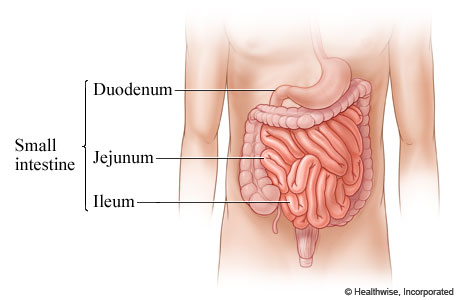
Small intestine
A ~6 m long tube of smooth muscle lined with epithelial and secretory cells.
By this time, mechanical & some chemical digestions are completed, and absorption begins.
3 major regions of the small intestine:
Duodenum: the first 25 cm section, where most chemical digestions occur, and receives pancreatic secretions.
Jejunum & Ileum: Location of absorption into villi.
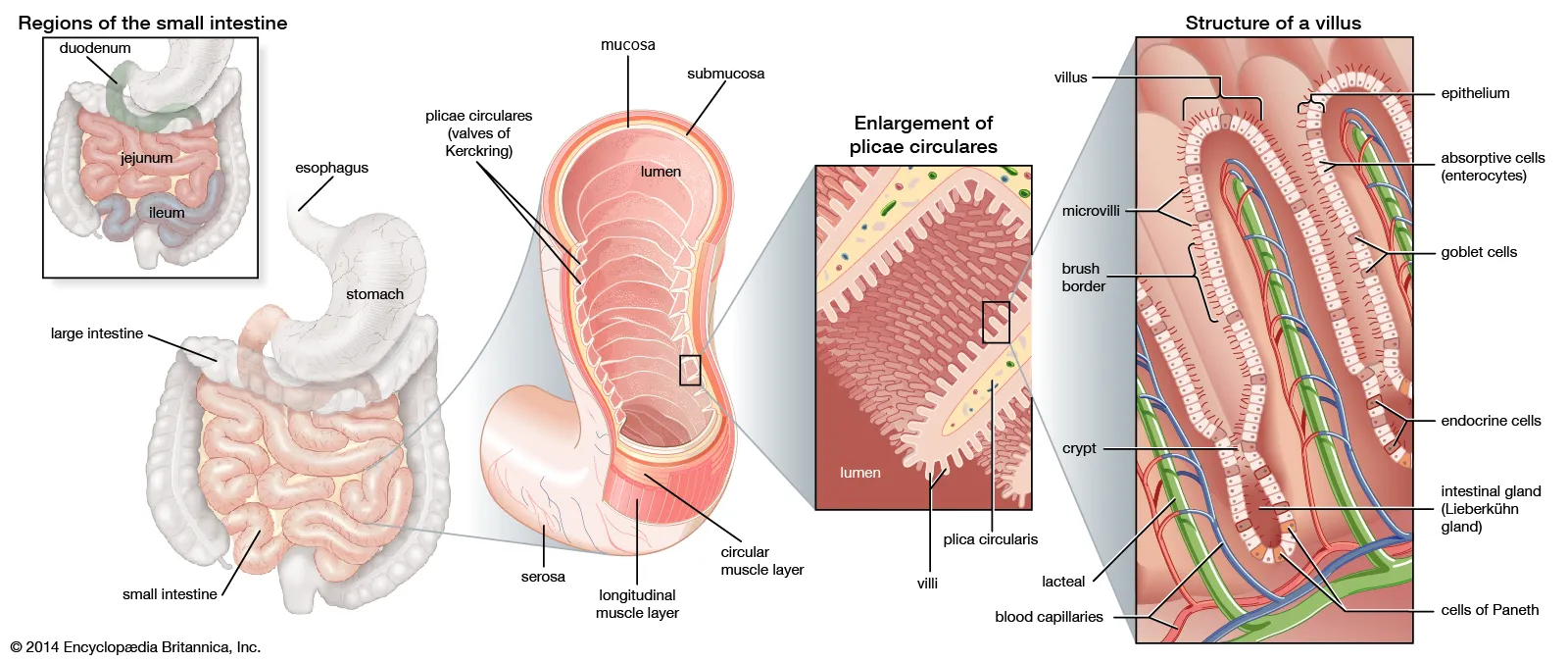
Villi (singular = villus)
Millions of tiny finger-like projections are located in the inner lining of many folds.
Villus: Epithelial tissue with a lacteal (lymph vessel) & a capillary bed in the centre.
Epithelial cells: have a “fringe” of membrane extending into the intestinal lumen.
The intestine has a high surface area due to many folds (villi on folds, microvilli on the villi), long length, and narrow diameter.
→ Maximizes the area of secretion of enzymes and absorption of food.
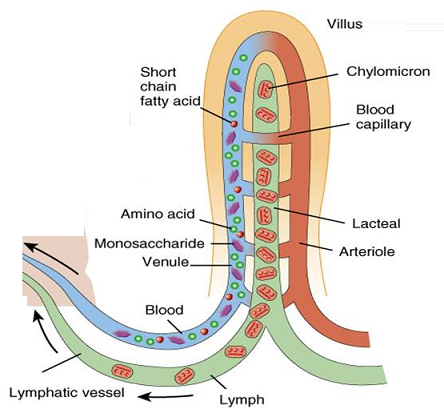
Absorption in small intestine
Glucose, amino acids, & nucleotides are actively transported into the cells of the villus and then absorbed into the capillaries.
Capillaries fuse to form the hepatic portal vein.
Nutrients are sent directly to the liver.
Glycerol and fatty acids diffuse into the cells of the villus.
Villus cells reassemble them into fat at the ER.
Fats are then packaged with cholesterol and coated with protein.
They are sent to the lacteal as lipoproteins.
→ These lipoproteins enter the bloodstream with the rest of the lymph fluid.
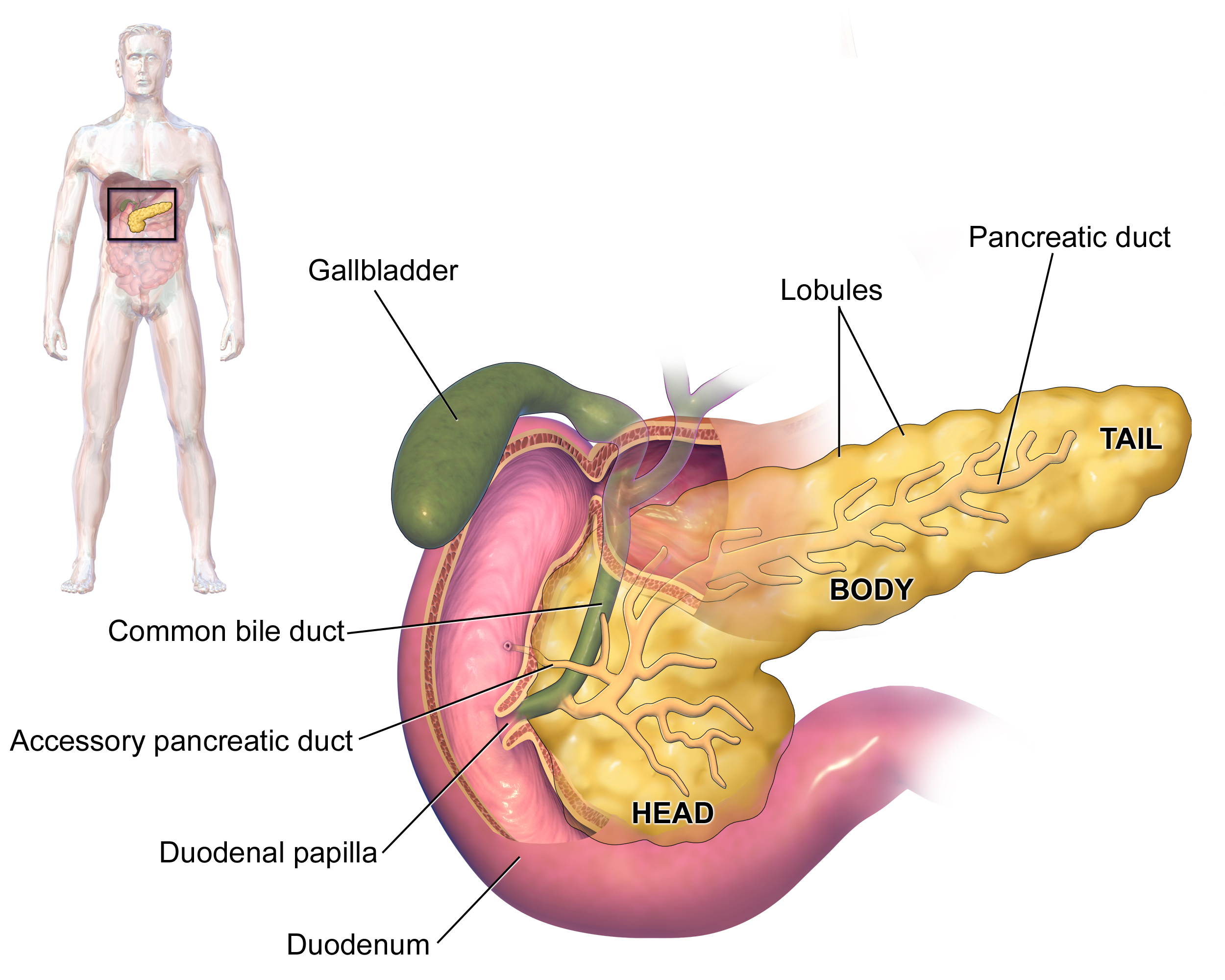
Pancreas
A large gland that is located beneath the stomach and beside the duodenum.
Not a digestive gland because it is not solely involved in digestion.
Very flat and elongate in shape.
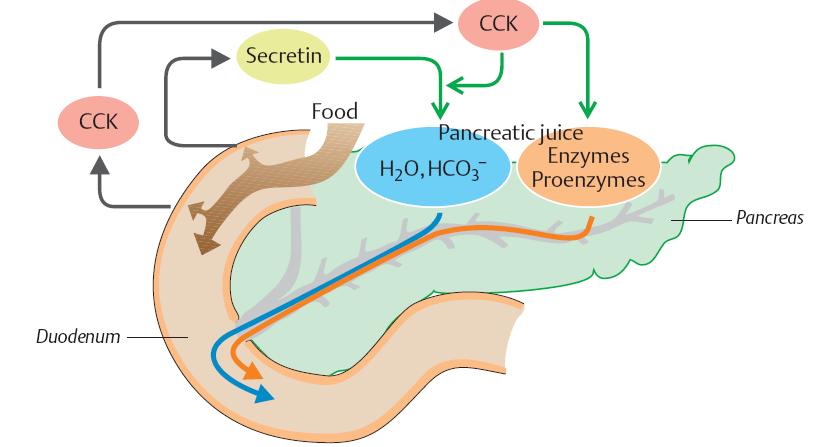
Pancreatic juice
Sent from the pancreas to the duodenum via the pancreatic duct in response to a hormone.
→ Chyme (acidic) in the duodenum causes a hormone called secretin to be released into the blood, where it is then carried to the pancreas.2 major components of pancreatic juice:
Bicarbonate (HCO3-), which reacts with HCl to increase the pH from 2.5 to 8-9.
Enzymes, which are all specialized to work at pH 8-9.
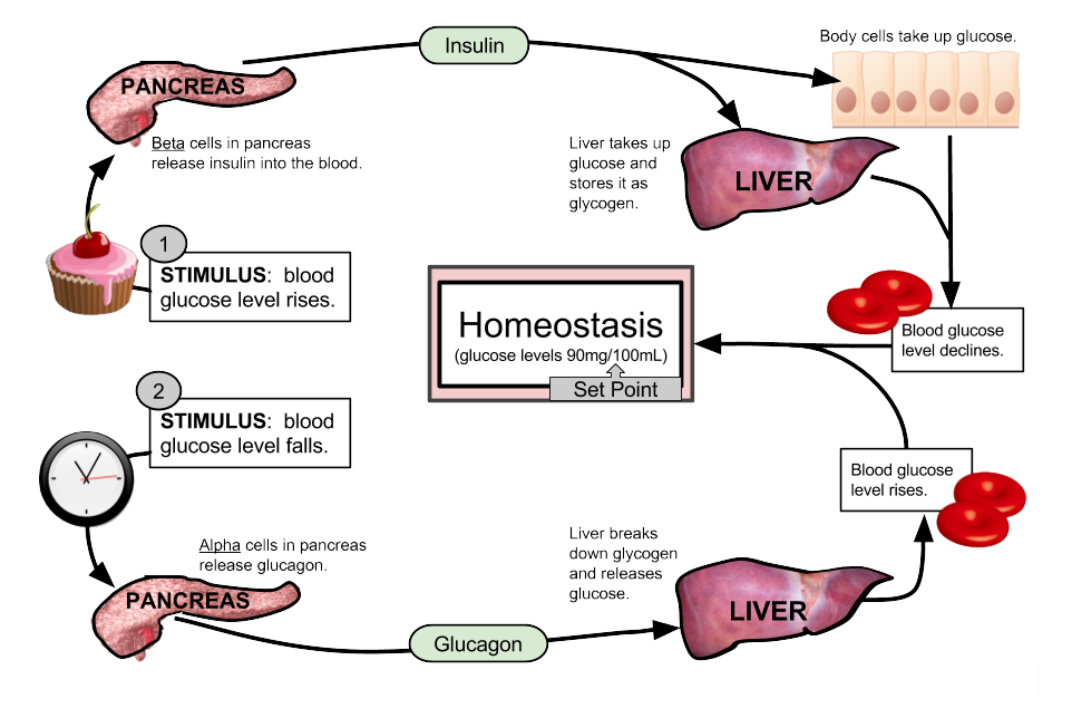
Insulin & Glucagon
Pancreas also produces the hormone insulin, which is a protein hormone.
High [blood sugar] → the pancreas releases insulin into the blood, which stimulates muscle cells, fat cells, and liver cells.
→ Causes an increase in active transport of glucose out of the blood and into cells, where it is converted into glycogen for storage.Low [blood sugar] → the pancreas detects and releases another hormone called glucagon.
→ Causes liver & muscle cells to convert glycogen back to glucose.
→ These two processes are controlled by negative feedback mechanisms to maintain blood sugar levels.
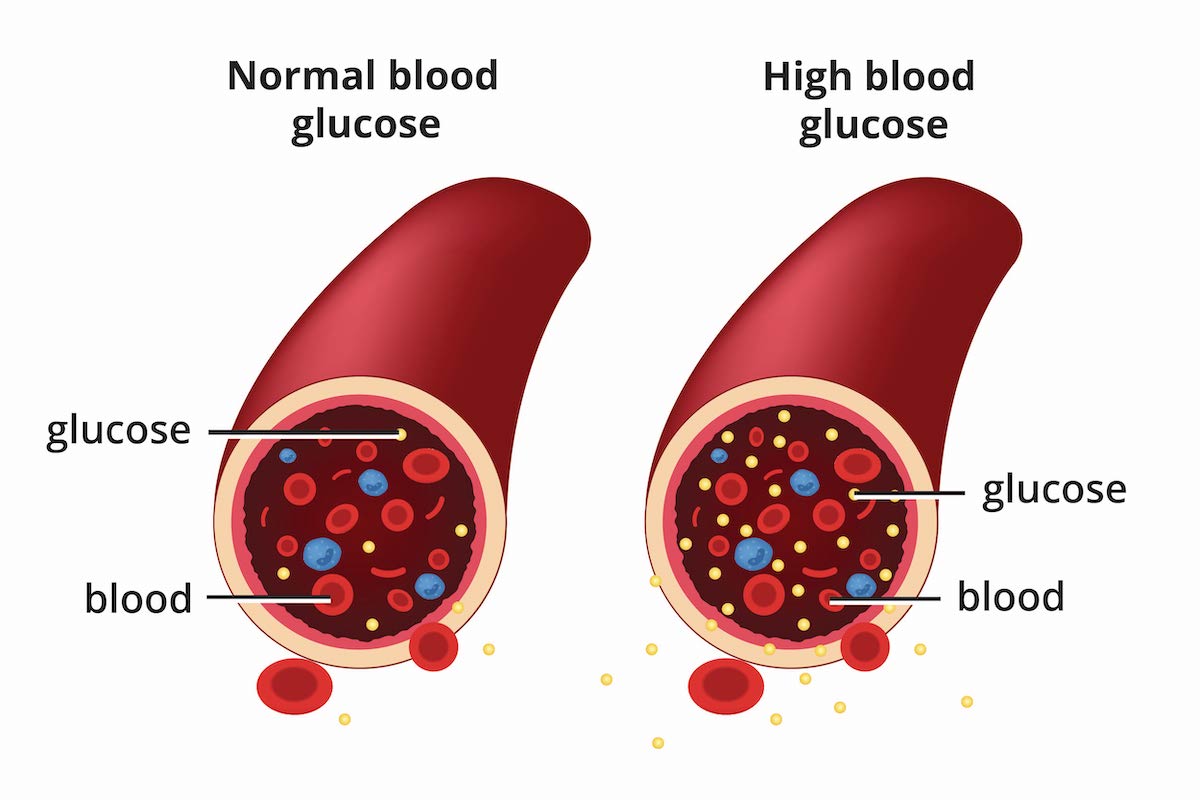
Diabetes
Body cannot make insulin at the pancreas, OR the body’s cells cannot bind to insulin, and thus cannot respond to insulin.
→ Blood glucose levels can get dangerously high.

Pancreatic enzymes
Pancreatic amylase: starch → maltose
Trypsin (like pepsin, a protease): protein → polypeptides (tripeptides)
Various nucleases: nucleic acids → nucleotides
Various lipases: lipids → glycerol + fatty acids
Various peptidases: polypeptides (di/tri-peptides) → amino acids
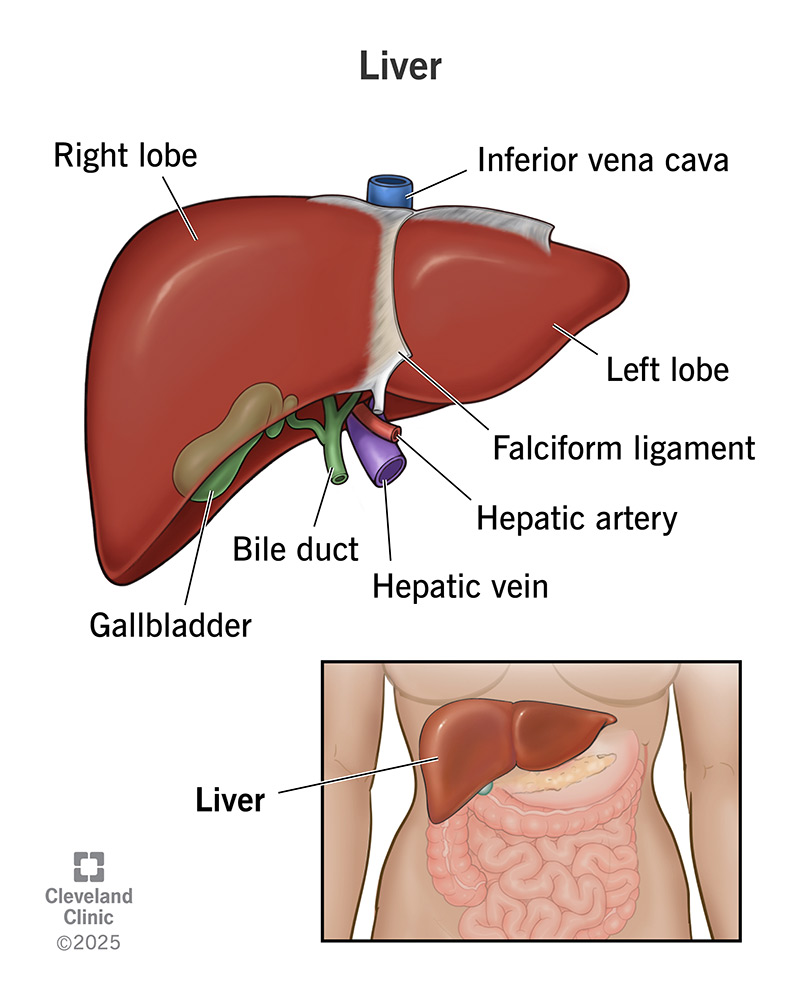
Liver
Largest gland in the body, which has over 200 different functions, 6 critical to digestion.
Synthesizes bile to emulsify (break into tiny water-soluble droplets) fats
→ Bile is stored in the gall bladder and is released to the duodenum by the bile duct.
→ Fat emulsification allows more surface area for lipase to act on.Maintains homeostasis by removing & storing nutrients from the blood, especially glucose, which is converted to glycogen.
Produce blood proteins, including fibrin & prothrombin (clotting proteins).
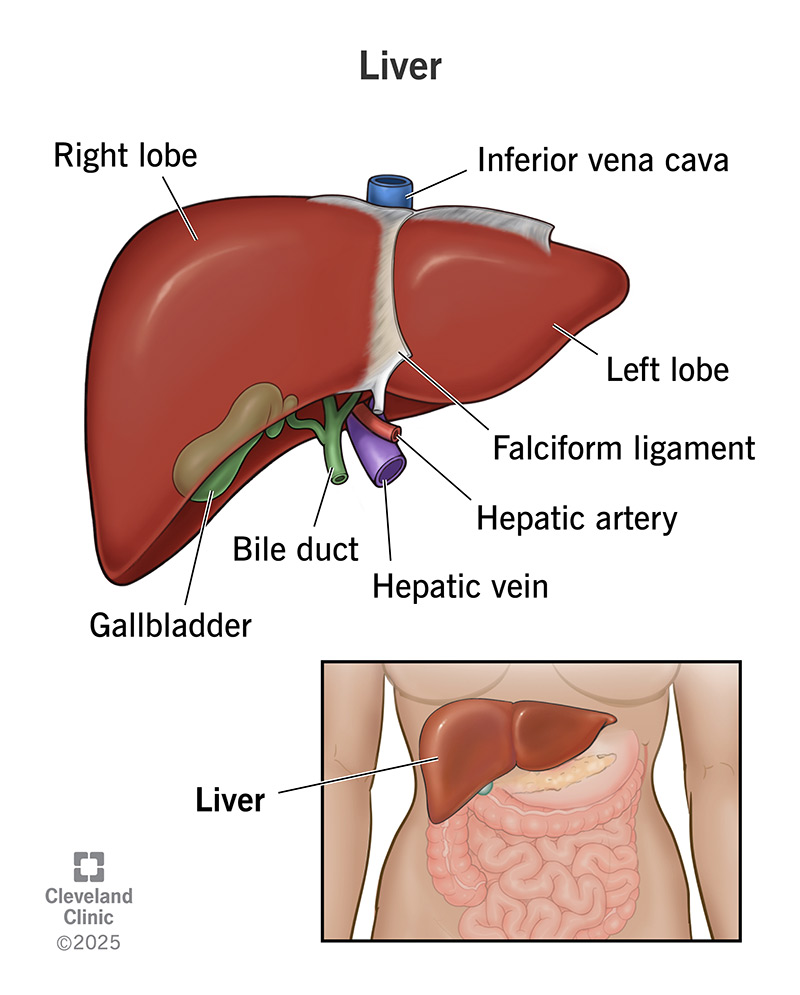
More functions of liver
Destroy old/dead red blood cells
Convert excess amino acids and ammonia (NH3) into urea.
→ Kidneys remove urea from the blood to produce urine.Detoxify alcohol, many drugs, and other compounds.
→ Ex: Contains enzyme catalase, which breaks down H2O2.
→ Many alcoholics die from cirrhosis (hardening) of the liver.